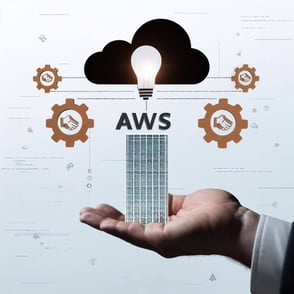The trend of moving data from on-premise servers to private and public cloud solutions continues. The privacy, security, cost and performance of a solution remain the key drivers for enterprise IT data decision-makers. Let’s take a look at the pros and cons of on-premise vs. cloud storage from an organizational perspective.
Privacy and Security
While cloud storage has grown in popularity and maturity, enterprise technology leaders must continue to be mindful of managing corporate data that is critical. On-premise servers allow organizations the greatest control of the privacy and security of their data. One problem presented by on-premise solutions is maintaining staff to manage the upkeep of software and hardware solutions. As organizations expand and hardware stockpiles grow, the potential surface area for a security attack increases. The onsite solution simply becomes harder to manage.
Private cloud solutions (enterprise cloud) offer similar privacy and security integrity as on-premise solutions. A company’s data is protected behind a firewall. Moving to a private cloud offers flexibility as organizations want to scale-up quickly and spin-up cloud instances. The downside is that enterprise IT departments still have to maintain and manage data centers and servers. Over time, servers have to be replaced as software and hardware updates become necessary.
If either on-premise or private cloud technology users allow hardware to age without proper maintenance, data can suffer. Hard drive faults can occur over time with heavy use. Servers degrade through time and must be maintained at a CapEx cost to firms. Data privacy and security must be considered when on-premise servers are decommissioned, physically destroyed or recycled. Another issue surrounding privacy and security of data can be the expertise of the company’s own security personnel who are maintaining these solutions. Security engineers may need to be hired or consulted to manage ongoing solutions.
With public cloud solutions, like AWS, Azure or Google Cloud, organizations give up some control on the security of their data to a third party. Although security breaches are uncommon, they do happen. Public cloud technologies allow enterprises to easily upload large quantities of data for storage. One drawback is that once data is pushed to the public cloud, it can be challenging to manipulate and get back out of the cloud in a presentable format. While privacy on the public cloud seems intact with modern updates, it can be difficult for enterprises to prove compliance to regulatory agencies. A big benefit to smaller organizations is leveraging the public cloud for items like disaster recovery and fault tolerance.
Cost
Cost continues to be the key factor that is driving organizations towards some sort of cloud storage solution. Here are some major cost concerns of on-premise data solutions:
- The cost of hardware and software - this includes buying and maintaining servers and software solutions through time. Problems with dust, overheating, degradation over time and heavy use can lead to unwanted faults and production issues.
- Storing legacy hardware - much of legacy hardware could be redeployed, sold for reuse or returned to the manufacturer for a refund; due to compliance and security risk, it is stored for perpetuity.
- The cost of maintaining data privacy and security - as hardware and software footprints grow, so do the chances of a security breach. Enterprises have to continually hire internal security experts to maintain compliance and the integrity of data.
- Non-compliance fines - organizations who do not keep up with compliance metrics risk hefty fines from regulatory agencies.
- Internal real estate - companies have to set aside internal space for servers or maintain data warehouses at high costs that may be off-site.
- CapEx vs. OpEx - on premise servers are generally capital expenses and can be large in scope and unpredictable. Cloud solutions are generally monthly fees that fall within operating expense budgets and if monitored properly can bring predictability and budgeting confidence to ongoing payments for projected growth.
Firms have to look beyond face value when comparing the cost of migrating to the cloud. Assumptions need to be fully vetted before enterprise IT departments script a data storage roadmap.
Things to consider before moving to the Cloud:
- Cloud exit strategy - designing applications to be flexible and portable to multiple vendors.
- Data Audit Trails - to guarantee data migration integrity and compliance.
- The true cost of moving to the cloud:
- Measure underutilized on-premise resources.
- Care must be taken to monitor virtual machines and pre-pay options which sometimes are unaccounted for in cloud total cost.
- Total Amount of RAM, virtual machines, storage capability, etc. needed by the organization now and in the future.
- The cost of exiting existing contracts for on-premise software and hardware.
Performance
One benefit to running an on-premise solution is that servers on-site are not reliant upon an internet connection. Control and timely access to data are also an upside to on-premise server performance. However, investing only in local servers does create inflexibility for organizations.
Cloud computing requires internet connectivity and can display latency issues occasionally. The benefit to performance is that third-party vendors are constantly updating software and hardware with the latest and greatest solutions. Also, by using cloud technologies, companies can manage data usage cost on an “as needed” basis. Basically, by using cloud platforms, enterprise IT departments can manage volume by spinning up instances during heavy traffic and also spin down instances at times of low traffic.
Result
Larger organizations are navigating to a Hybrid or Multi-Cloud model. Sensitive data is stored locally, and cost is managed by moving much of the other data and services to the cloud. A mix of on-premise, private cloud and public multi-cloud solutions is the going trend and benefits complex companies looking to manage cost while getting the performance and security needed in today’s digital environment.
Learn how Callibrity leverages cloud technology for clients

.png?width=560&name=On-Premise%20vs.%20Cloud_%20Pros%20and%20Cons_callibrity%20(1).png)



